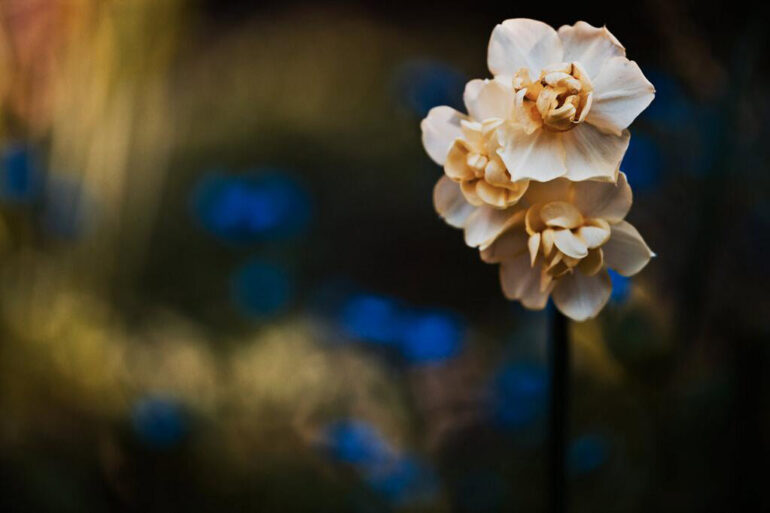We may earn a commission when you purchase through affiliate links. Learn more.
Bokeh is a word that’s often heard on the lips of photographers, usually with a descriptive adjective like smooth or soft attached to it. The word has its origins in Japan, where the word boke refers to the kind of blur that appears in out of focus areas in photos. Boke–aji more specifically references the visually attractive properties of a photo’s out of focus areas, often most noticeable in the highlights and areas of contrast, and it’s this definition that most photographers are referring to when they talk about bokeh.
Certain lenses render blurry, out of focus areas better than others since each lens is constructed differently with individual optical qualities. A lens’s iris diaphragm which controls the size of the aperture opens and closes using blades that are arranged to form a circular shape. More aperture blades and aperture blades that are curved, rather than straight, result in a more circular lens iris, and this can help to improve the way out of focus areas are rendered.

In this example to the left, we can see the benefits of attractive bokeh — the out of focus areas are smooth and soft, and the areas of contrast and highlights are smooth round orbs. This very soft background that almost looks like it was painted adds to the look of the photo and helps to draw the eye toward the cluster of flowers that is in focus.
If you have a lens capable of producing image with attractive bokeh, you’ll want to open your lens up to the maximum aperture, or close to it. The closer you are to your subject, the shallower the depth of field will be, and the more pronounced the background bokeh can appear. Even though lenses like the Canon 85mm f/1.2 and Nikon AF-S NIKKOR 105mm f/1.4E ED are among the most famous for their bokeh, longer telephoto lenses and even lenses that don’t have a very fast maximum aperture may also produce very attractive bokeh if you approach as close as possible to your subject, provided there is enough distance between the in focus subject and the background. The more space between subject and background, the more aesthetically pleasing this out of focus area will look. When you have the option, you’ll achieve the best soft bokeh results by positioning your subject in front of backgrounds with good color and contrast.

